How to butcher Chickens
Why We Use a Kill Cone for Dispatching Chickens: A Relaxed Guide to Butchering on Our Homestead
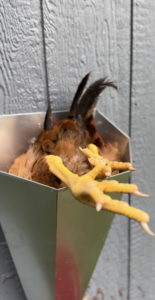
Raising our own meat has been a deeply fulfilling journey for us at our homestead in Georgia. There’s something gratifying about knowing exactly where your food comes from, and for us, that means raising chickens. As we stroll through our 17 acres of lush pasture, watching our Freedom Rangers roam freely, we feel a sense of pride in how we manage our little farm.
Let’s dive into why we’ve chosen to raise our own chickens and how we handle the butchering process—specifically why we use a kill cone to dispatch our birds.
The Joy of Raising Chickens
For us, chickens aren’t just a source of meat; they play a vital role in our lives and our sustainable lifestyle. We love the idea of having control over what our chickens eat. By allowing them to free-range, we ensure they forage for natural foods, like insects and grasses, which leads to healthier, tastier meat.
We’ve made a conscious decision not to contribute to the factory-farming practices that dominate the poultry industry. Many chickens raised in commercial settings live in cramped, unhealthy conditions, and we want no part of that. Instead, our Freedom Rangers enjoy a life of freedom, with ample space to roam and explore. They are protected by our loyal livestock dogs, ensuring they are safe from predators while living out their chicken lives to the fullest.
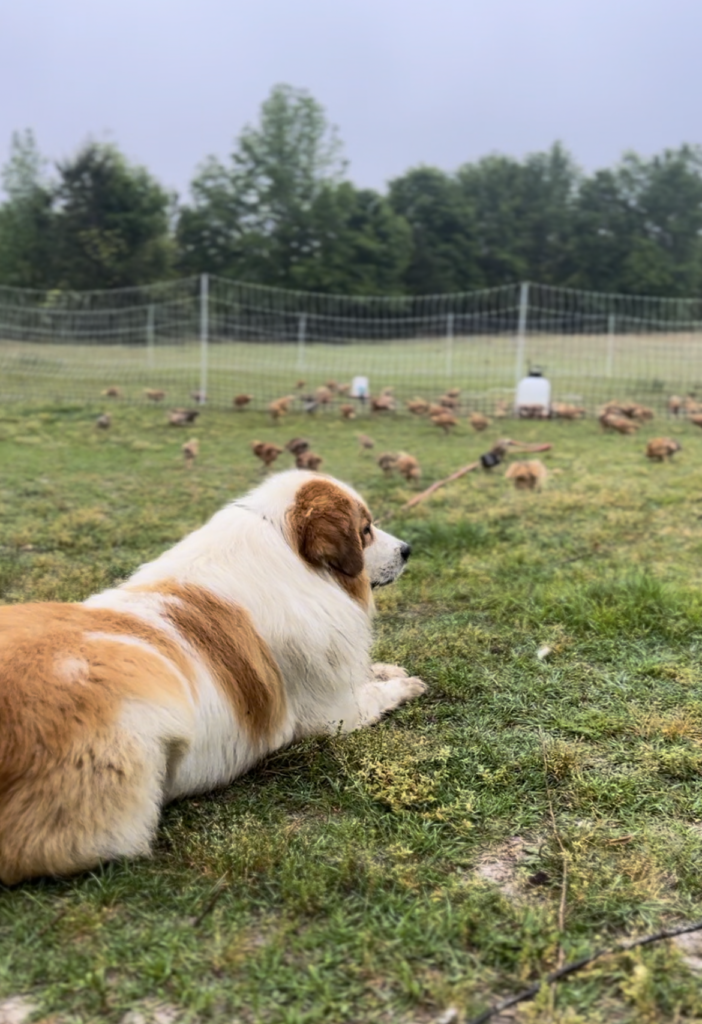
Why Use a Kill Cone?
When it comes time to dispatch our chickens, we take the responsibility seriously. It’s not an easy task, but it’s one we believe is important to do with care and respect. We have found that using a kill cone is the best method for several reasons:
- Humane Treatment: The primary goal of using a kill cone is to ensure the chicken’s dispatch is as humane as possible. The design of the cone allows us to secure the bird gently, reducing its stress during the process. A calm chicken is a more respectful chicken, and we believe in giving them the dignity they deserve.
- Efficiency: Dispatching chickens can be a bit of a messy job, but a kill cone makes it much more straightforward. By directing the blood flow, we can perform the task quickly and effectively. This efficiency is a blessing when you’ve got multiple chickens to process.
- Less Stress for the Chicken: One of the most significant advantages of using a kill cone is that it minimizes the stress experienced by the chicken. When a bird is confined in a cone, it cannot flap around or panic, which not only makes the process smoother but also ensures a more humane experience.
- Cleaner Process: The kill cone helps contain the mess associated with butchering. It directs everything downward, making cleanup easier afterward. This is especially important on a homestead where maintaining cleanliness is crucial for both animal and human health.
- Connection to Our Food: Using a kill cone deepens our connection to the food we consume. It’s a reminder of the responsibility that comes with raising animals for meat. We approach this task with gratitude, knowing that we’re providing nourishment for our family.
If you’re interested in trying a kill cone for yourself, you can purchase one here. Having the right tools makes a world of difference in this process.
The Butchering Process: Step by Step
Now that we’ve covered why we use a kill cone, let’s talk about the butchering process itself. It’s a straightforward procedure that, while it may seem daunting at first, becomes easier with practice. Here’s a relaxed, step-by-step guide to butchering chickens on our homestead:
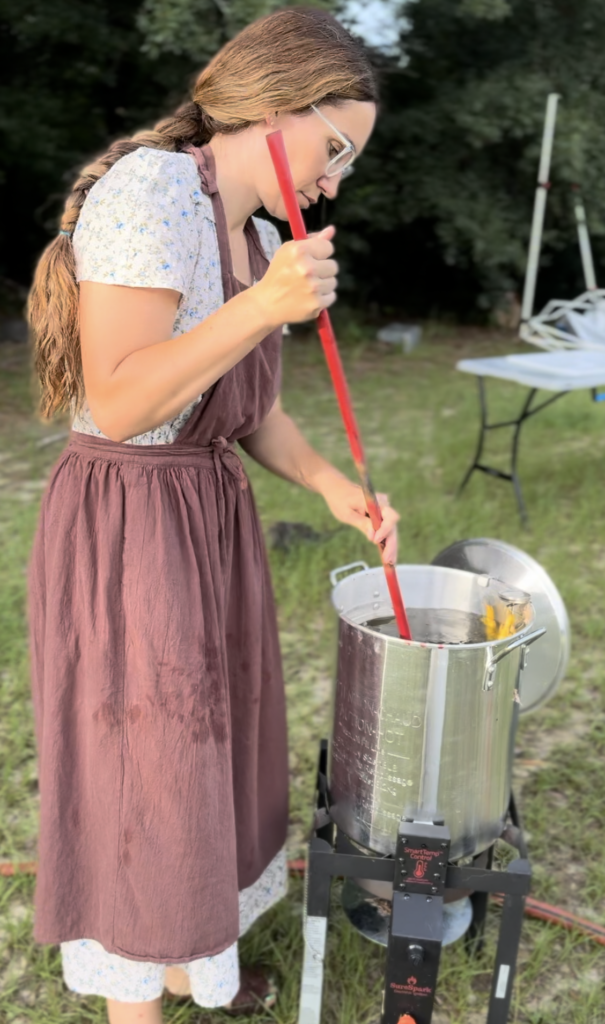
This post contains affiliate links, which means I make a small commission at no extra cost to you. See my full disclosure here
- Preparation: Before you start, gather all your supplies. You’ll need a kill cone, a sharp knife, a bucket for feathers, and a cooler with ice or a deep freezer for storing the meat afterward.
- Secure the Chicken: Gently place the chicken in the kill cone, ensuring it is comfortable and secure. This is where the magic of the cone comes into play, as it keeps the bird calm.
- Dispatch the Chicken: With a sharp knife, make a clean cut to sever the carotid arteries. This should be done swiftly to minimize discomfort. The bird will be dispatched quickly, and you’ll notice a significant reduction in movement.
- Let the Bird Bleed Out: Allow the chicken to hang in the cone for a minute or two to ensure it has bled out completely. This is an essential step for quality meat.
- Pluck the Feathers: Once the chicken has bled out, it’s time to pluck the feathers. You can do this by hand or use a plucker if you have one. It
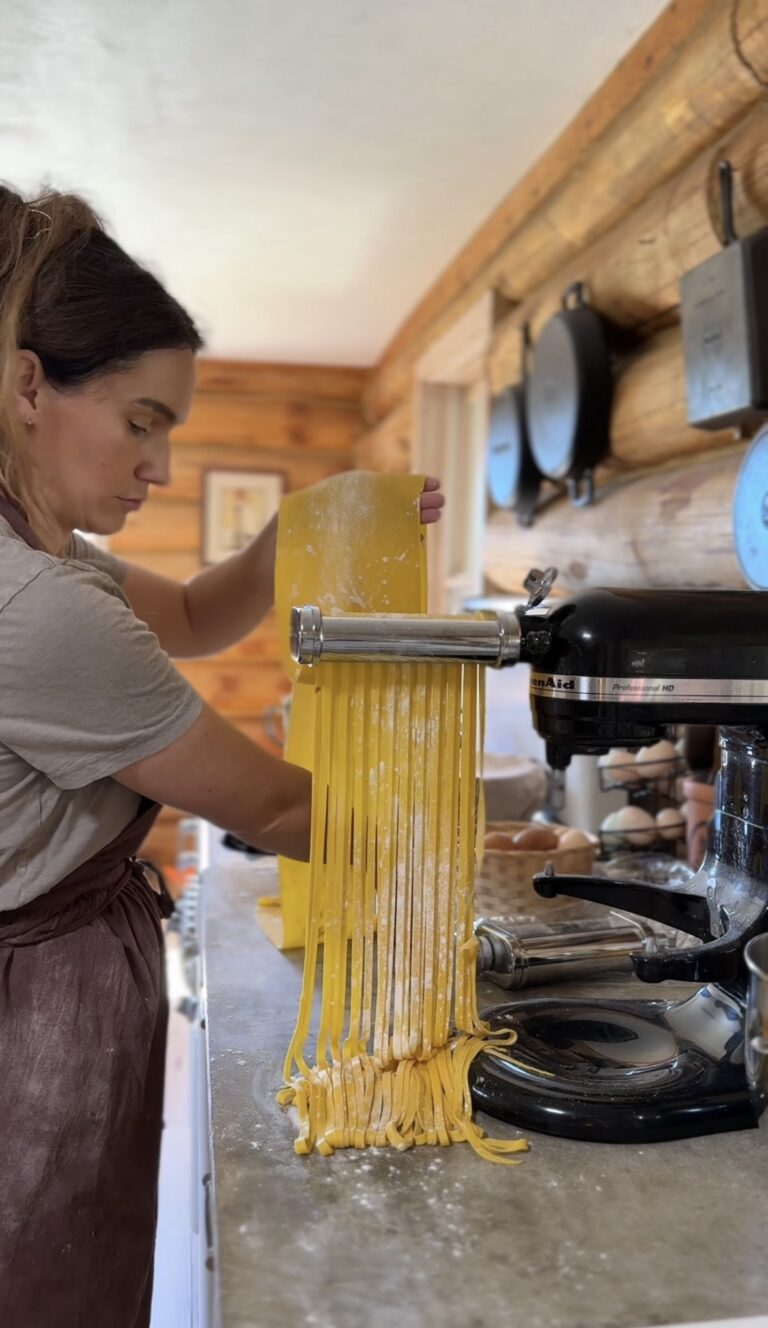
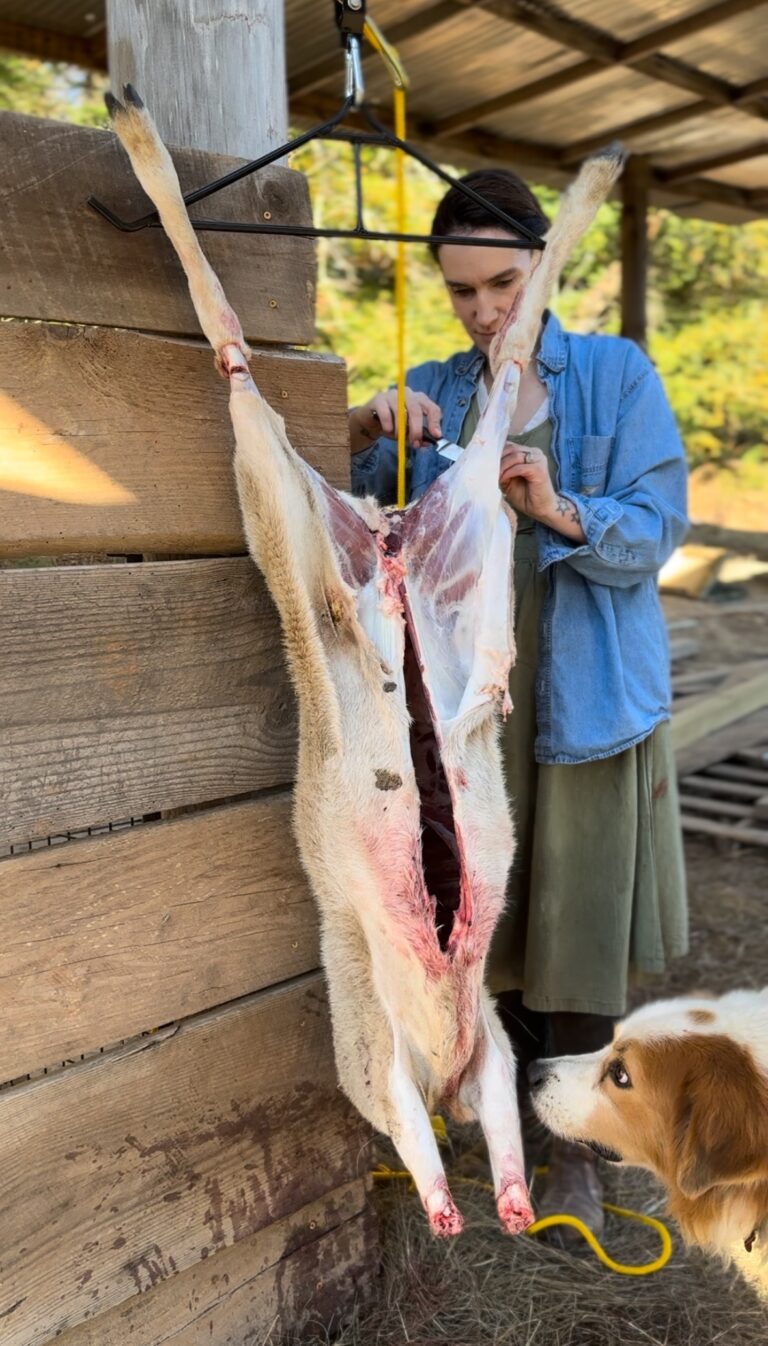
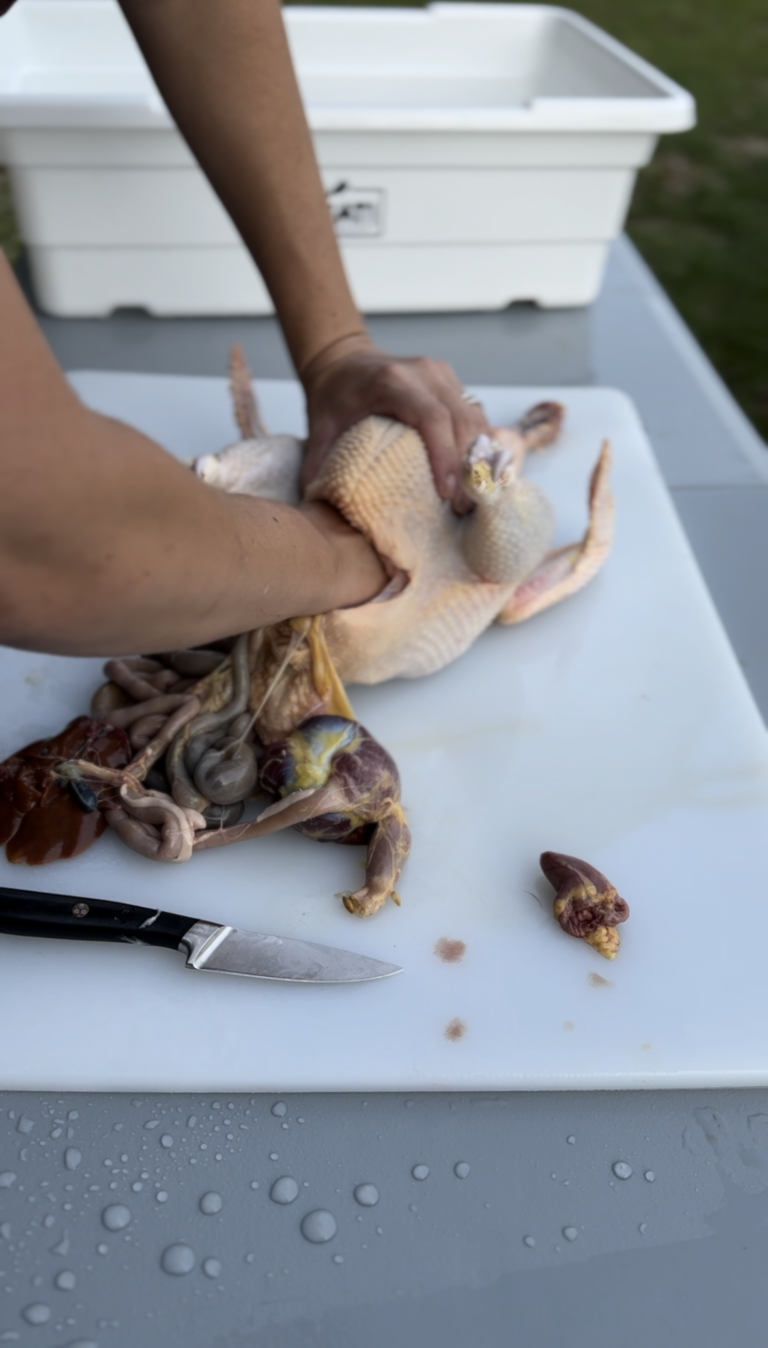
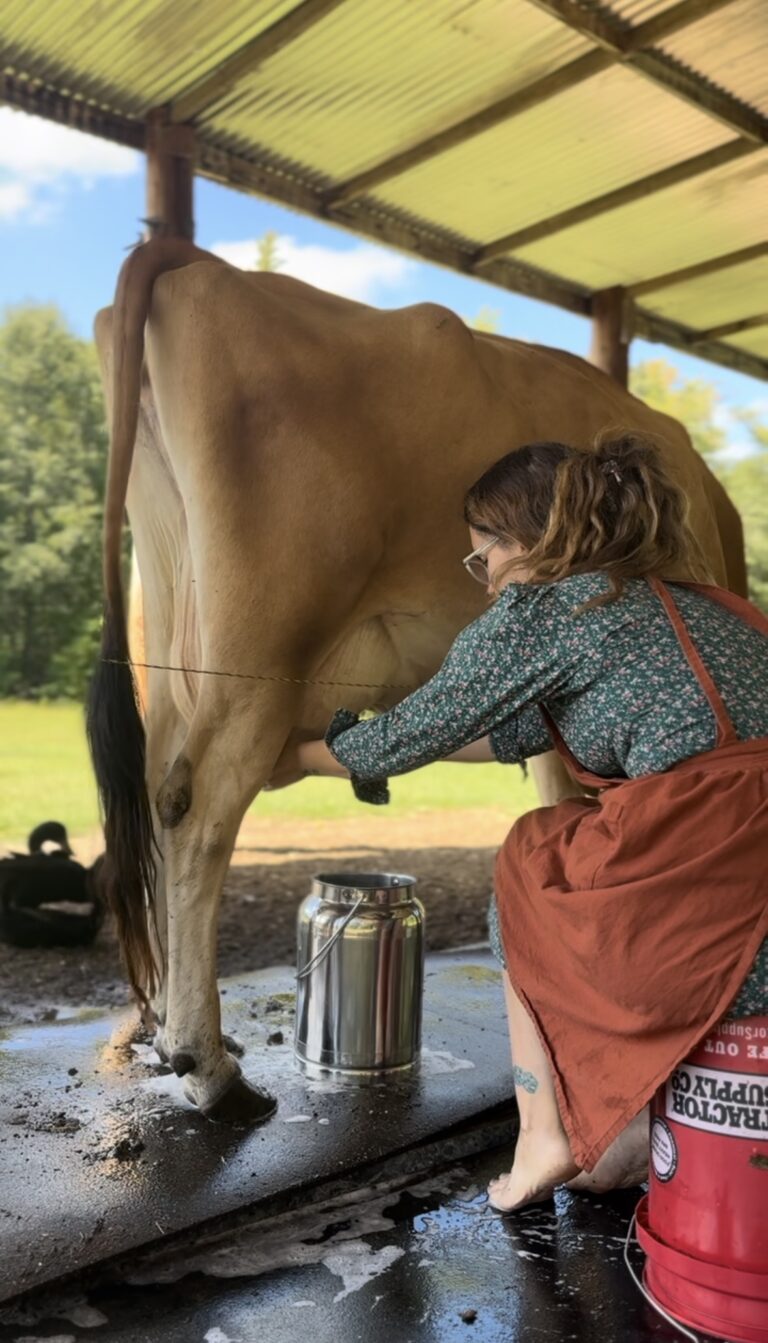

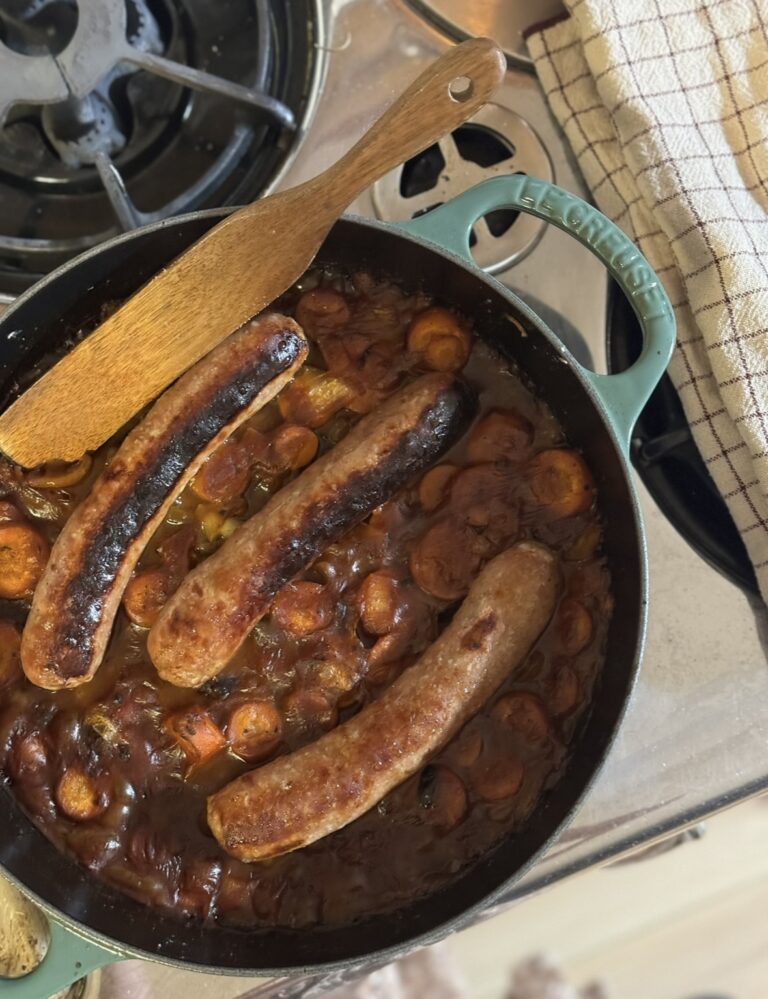
Do you have a YouTube channel where you have the chicken dispatch and cleaning process outlined. My biggest fear is that I contaminate the meat.
I only have shorts on youtube. But there is a wealth of knowledge on the subject on youtube. Its very easy to process chickens, very low risk of contamination. Even if you do manage to get some poop on the meat its easily washed away and bacteria is killed during high temps of cooking